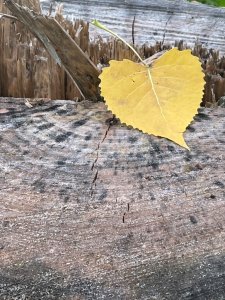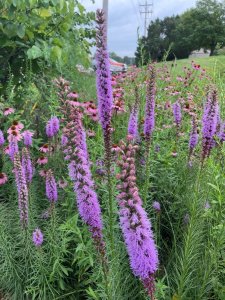Climate Impacts on Autumn
September 13, 2023
Erin Parker, Interpretive Services Supervisor
As we flip the page to September in our calendars, we start thinking about all things autumn: from colorful fall foliage to shorter daylight hours and the arrival of crisp temperatures. Just like other seasons, climate change is impacting the version of fall that we (and our local wildlife) experience.
“Warmer, wetter, and wilder” is used to describe global weather patterns as compared to 100-150 years when modern instruments such as thermometers started to be utilized regularly and weather stations were popularized to record local weather conditions. The changes to fall may be harder to observe than some of our other seasons, but they are happening and we can look to a variety of data to show us these changes.

Autumn colors
Longer, hotter summers and accompanying droughts can signal trees1 to drop their leaves early to reduce the water loss that happens when they photosynthesize. If summer temperatures linger into the fall but the trees weren’t stressed by drought, they may stay green later to capitalize on the additional food stores that they produce. This means that we see a shortened fall color season.
The combination of conditions that occur more frequently in the fall- above average temperatures, increased precipitation, and even increased cloud cover- can work to dull fall leaf color. This happens because the pigments that make up all those beautiful fall colors are degraded when temperatures remain warm day and night2.
Climate changes and fall migration
Migratory animals from monarch butterflies to birds are also shaped by climate changes. A combination of factors typically triggers the start to an animal’s migration including shorter daylight hours, cooling temperatures, and even the chemical signals in the leaves that they consume. With leaves and flowers sticking around later into the autumn, the signals that many animals typically receive from their surroundings change.
The trouble is that if, after a long, warm fall, winter temperatures or storms arrive or sudden freeze-ups prevent water access, migratory species can find themselves challenged to find food and shelter that are only available hundreds of miles away. Big storms from tornadoes in the Midwest to hurricanes in the Gulf push migrating birds and insects off course, and these big weather events are happening with more frequency as well as severity as they’re fueled3 by long, hot summers.
Supporting migration
Are there action items that we can take to support migrating wildlife in the fall? Absolutely! One thing is provide habitat, on whatever scale that you are able. Turf grass lawns don’t allow animals of any size to find much in the way of food or shelter, so adding native shrubs, trees, and flowers can make a big difference when the weather becomes extreme. Birds, butterflies, bats, and other airborne migrating species can take cover from heavy precipitation or high winds.

Leaving your wildflower garden standing into the fall and winter months can create wind and weather breaks, allowing tired migrators to rest along their route.
Adding a water feature, such as a bird bath, can also help. Not only will it support wildlife during periods of summer drought, it will provide water during migration routes and a water feature with a heater can be the only source of water during a sudden cold snap after a lingering warm autumn.
Luckily, many of the actions we can take to help migrating animals also improve our backyard habitat for local, resident wildlife and for our own aesthetic enjoyment, too.
Sources and resources for more reading:
